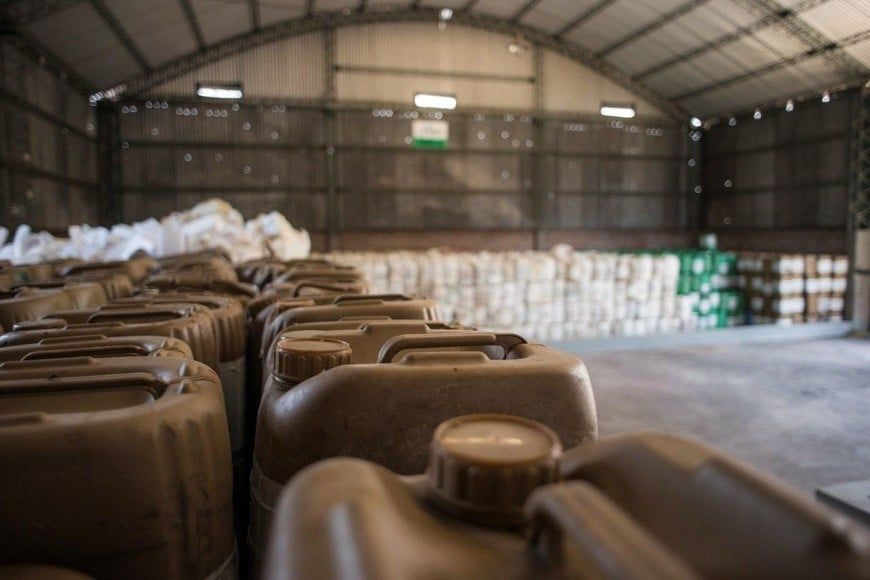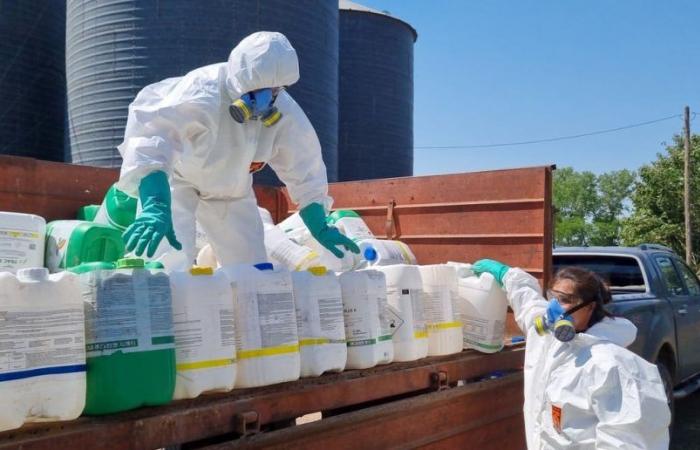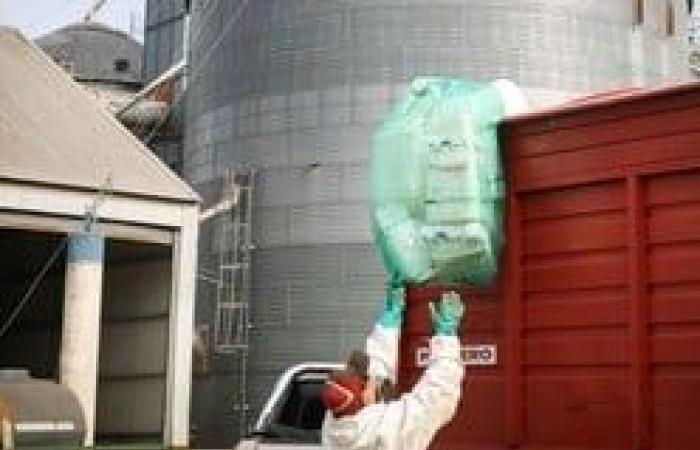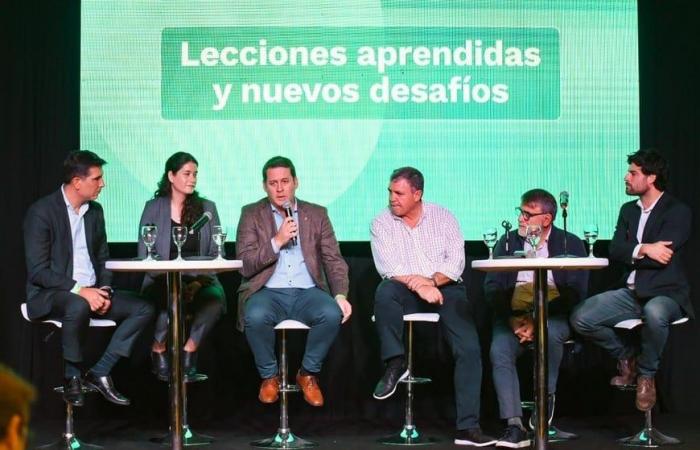CampoLimpio and the Argentine Association of Sanitary Engineering and Environmental Sciences (AIDIS Argentina) carried out in Rosario the III International Conference on the Law of Empty Phytosanitary Containers #EveryoneMakesUnCampoLimpio: a shared responsibility, where sustainability in agriculture was addressed comprehensively, based on the responsible management of empty phytosanitary containers. During the meeting, national and provincial authorities, representatives of the sector and specialists from the plastics industry participated in a space for public-private dialogue, in which common interests and challenges, success stories and lines of work were discussed.
The discussion focused attention on a fundamental feature of Law 27,279 – regulations that for 8 years have provided for the responsible management of empty phytosanitary containers -: the extended responsibility of all actors in the chain.
On the occasion of 8 years since the sanction of Law 27,279 on Minimum Environmental Protection Budgets for the Management of Empty Phytosanitary Containers, the event was attended by the different actors in the chain, national and provincial authorities and various specialists in sustainability and bioeconomy. Consular members were also present to expand the conversation on waste management from a global perspective.
Through four panels and a closing conclusion, the speakers analyzed experiences, successful cases in different jurisdictions and challenges, emphasizing the paradigms of sustainable production and the bioeconomy. In addition, the conversations focused attention on one of the fundamental aspects of Law 27,279, which makes it pioneering and unique in the country: the extended responsibility established by the regulations with respect to all those who participate in the chain, which promotes synergies. and the public-private work that articulates the CampoLimpio system.
Precisely, the motto of the conference is we all make a clean field: a shared responsibility, which represents a comprehensive approach to the challenge of reducing the impact of empty phytosanitary containers on the environment and the health of the population.
One job, one cause
Mariale Alvarez, president of CampoLimpio, told Campolitoral that “the opportunity to celebrate all that has been achieved (which is a lot) in these first years of the implementation of the Law is good, where one sees how you are learning and reinventing yourself as you go.”
According to him, they are facing the challenges of “this enormous collective and supportive management that is a learning experience for the entire industry, which implies working in a pre-competitive manner, to understand that the goal is super ambitious, because we have to recover all the containers that were they put in the field. And that does not depend only on the will of the industries, but it is a chain that has to work in coordination from the producer, the distribution chain, the industry, the authorities, the rural community that is part of this. “.
 Sustainability in agriculture was addressed in a comprehensive manner, based on the responsible management of empty phytosanitary containers.
Sustainability in agriculture was addressed in a comprehensive manner, based on the responsible management of empty phytosanitary containers. According to him, this challenge of a federal country “is great, but it requires adapting to each province, its authorities and its people. It is very motivating to work because it means doing it for a cause.”
Finally, he assured that Argentine agriculture is recognized worldwide for its rapid incorporation of technology and very good qualifications applying modern and sustainable practice. “But in terms of packaging, we are still missing, we are in the best regions with a recovery of 50%, that is, half is still missing. I have enormous confidence that the producers are aware and that in the coming years we are going to improve many more” .
numbers that speak
One of the speakers was Ricardo Oharris, a plastics industrialist, who recounted the details of one of the least known stages of this circuit. “According to carbon footprint studies, before CL, 1,100 gram containers emitted about 6 kilos of carbon dioxide into the environment, since most of them were incinerated,” he said. “Since the appearance of the CampoLimpio system, it has been reduced by one kilo, and it has gone to 5 kilos. Even with the incursion of three-layer packaging with recovered plastic, we can lower that footprint even one more kilo, leaving it at 4 kilos” . Oharris explains that he represents DOSAM, a national SME that specializes in blowing containers for agriculture. “We seek to improve the sustainability of agriculture. Plastic containers are today the most reliable containers to carry the inputs needed for the harvest. Sustainability is the essence of all businesses, and we are going to have to change our minds and know that the future lies there, although it is just giving its first buds.
Official support
Ana María Vidal de Lamas, Undersecretary of Environment of the Nation, joined “because I was part of AIDIS Argentina, and the evolution of the Law on minimum budgets for phytosanitary packaging is very important for us,” she emphasized. After 8 years of being in the business, with the evolution of the installation of the Temporary Storage Centers (CAT) and the possibility of removing this type of packaging from the fields, “we have had many complaints about misuse of these containers, which were sometimes even used to store water for human consumption. That is why it seems so important to us to store and treat them accordingly, either by recycling them with a second life, or for their definitive storage in their final disposal as hazardous waste.” .
 See alsoEnvironmental management in Gran Rosario: they collect thousands of empty containers
See alsoEnvironmental management in Gran Rosario: they collect thousands of empty containers The official stressed that it is also very important that they will soon implement the traceability of these containers “and this will tell us through the data of what is on the street and what we are recovering, that the truth is that Since CL started, it has recovered a lot, although there is still much more to do. But at least we have started, which is what is important. Trying to get the field up and running, for many years the environment was an issue that confronted production. and fortunately today we work together.”
He also announced that the advisory council will be finalized shortly. “We are calling it now, but it is difficult to bring together all the institutions, but they are already called, so in less than a month it will be working. We have a Law of Shared Producer Responsibility, we hope it will be brief with the general guidelines with which different currents and one would be this, with the possibility of giving a second life to these plastics. We receive many ideas from entrepreneurs that what they are doing is wonderful, and we are articulating the parties.
It is an NGO whose mission is to design and implement a complete environmental management system to recover empty phytosanitary containers from the Argentine countryside, promoting sustainability and caring for the environment. The association articulates efforts with municipal, provincial and national authorities along with distributors, producers and organizations in the sector to deploy the system throughout the national territory. It is a platform that integrates the collaborative work of this broad value chain and unifies the recovery process of empty containers of phytosanitary products used in the Argentine countryside, while promoting a new paradigm of circular economy in the productive sector.
Marcos Blanda, Secretary of Agriculture of Córdoba, participated in the panel dedicated to the authorities, along with representatives from other provinces. In this space, the officials detailed the evolution of the system in their jurisdictions, the contribution of producers, the destination given to plastic through authorized operators and the challenges ahead. Along these lines, the secretary highlighted that “it is the responsibility of all actors to ensure the packaging circuit, part of the solution is to invest in the consensus and commitment of the system from each of our places. The paradigm changed and understanding the concept of bioeconomy is the best path we have. The goal is to continue building community, collecting packaging, training and creating culture.
 The event was attended by the different actors in the chain, national and provincial authorities and various specialists in sustainability and bioeconomy.
The event was attended by the different actors in the chain, national and provincial authorities and various specialists in sustainability and bioeconomy. The comprehensive management system for empty phytosanitary containers is present in the province through the Transitory Storage Centers (CAT), located in Adelia María, Almafuerte, Córdoba, Laboulaye, La Puerta, Monte Buey, Río Cuarto, Río Segundo, San Francisco, Tancacha and Villa Dolores. Added to this are the reception and awareness days, which are carried out in productive areas where there is not yet a CAT.
During 2024, an approximate investment of 3,000,000,000 pesos has been estimated in Córdoba, aimed at strengthening the operational structure of the system and expanding its dissemination, with the aim of continuing to reduce the impact of packaging on the environment and health and revaluing the recovered plastic










